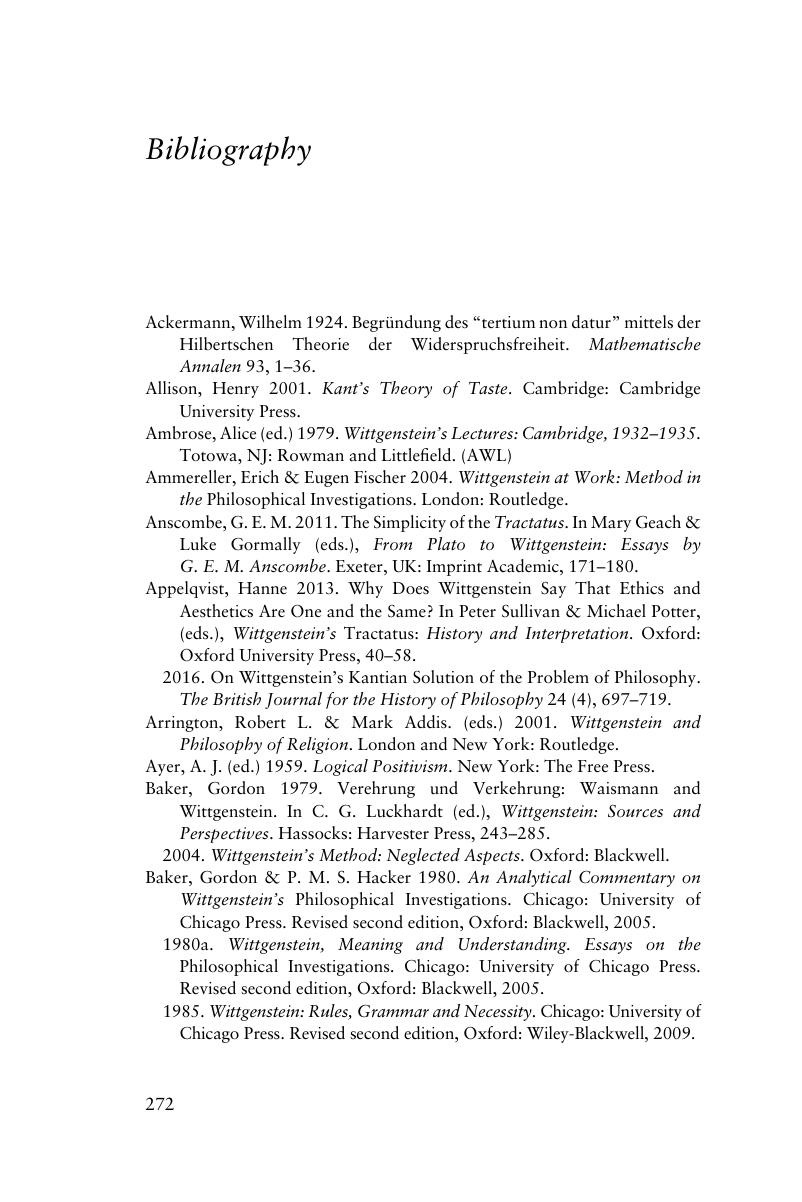Book contents
- Wittgenstein in the 1930s
- Wittgenstein in the 1930s
- Copyright page
- Walking with Wittgenstein
- Contents
- Contributors
- Abbreviations
- Introduction: Wittgenstein between the Tractatus and the Investigations
- Part I Changes and Continuities in Wittgenstein’s Philosophy
- Part II Philosophy of Mind
- Part III Religion, Ethics, and Aesthetics
- Part IV Philosophy of Mathematics
- Bibliography
- Index
- References
Bibliography
Published online by Cambridge University Press: 17 September 2018
- Wittgenstein in the 1930s
- Wittgenstein in the 1930s
- Copyright page
- Walking with Wittgenstein
- Contents
- Contributors
- Abbreviations
- Introduction: Wittgenstein between the Tractatus and the Investigations
- Part I Changes and Continuities in Wittgenstein’s Philosophy
- Part II Philosophy of Mind
- Part III Religion, Ethics, and Aesthetics
- Part IV Philosophy of Mathematics
- Bibliography
- Index
- References
Summary

- Type
- Chapter
- Information
- Wittgenstein in the 1930sBetween the <I>Tractatus</I> and the <I>Investigations</I>, pp. 272 - 289Publisher: Cambridge University PressPrint publication year: 2018



